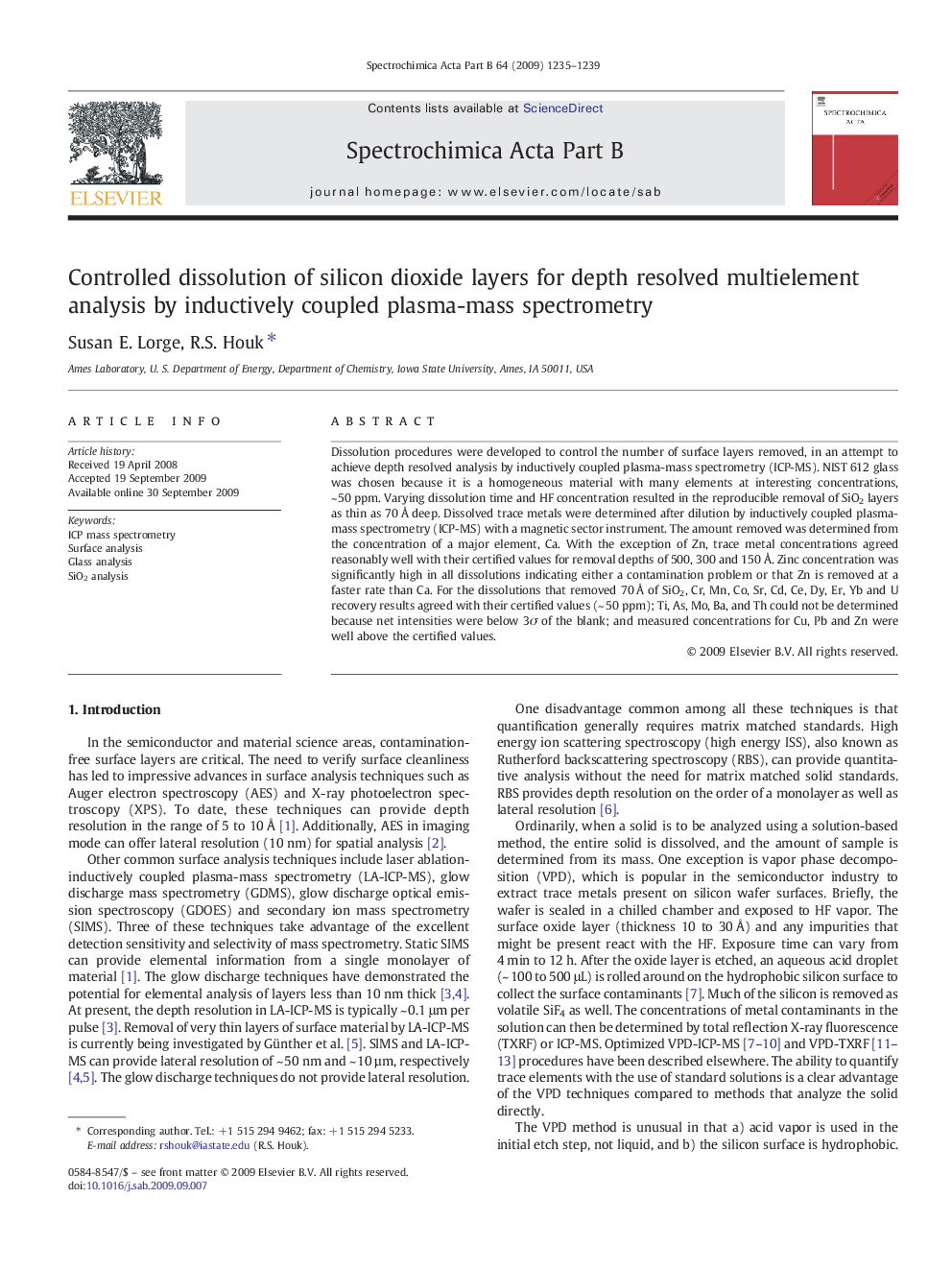| Article ID | Journal | Published Year | Pages | File Type |
|---|---|---|---|---|
| 1240703 | Spectrochimica Acta Part B: Atomic Spectroscopy | 2009 | 5 Pages |
Abstract
Dissolution procedures were developed to control the number of surface layers removed, in an attempt to achieve depth resolved analysis by inductively coupled plasma-mass spectrometry (ICP-MS). NIST 612 glass was chosen because it is a homogeneous material with many elements at interesting concentrations, ~Â 50Â ppm. Varying dissolution time and HF concentration resulted in the reproducible removal of SiO2 layers as thin as 70Â Ã
deep. Dissolved trace metals were determined after dilution by inductively coupled plasma-mass spectrometry (ICP-MS) with a magnetic sector instrument. The amount removed was determined from the concentration of a major element, Ca. With the exception of Zn, trace metal concentrations agreed reasonably well with their certified values for removal depths of 500, 300 and 150Â Ã
. Zinc concentration was significantly high in all dissolutions indicating either a contamination problem or that Zn is removed at a faster rate than Ca. For the dissolutions that removed 70Â Ã
of SiO2, Cr, Mn, Co, Sr, Cd, Ce, Dy, Er, Yb and U recovery results agreed with their certified values (~Â 50Â ppm); Ti, As, Mo, Ba, and Th could not be determined because net intensities were below 3Ï of the blank; and measured concentrations for Cu, Pb and Zn were well above the certified values.
Related Topics
Physical Sciences and Engineering
Chemistry
Analytical Chemistry
Authors
Susan E. Lorge, R.S. Houk,
